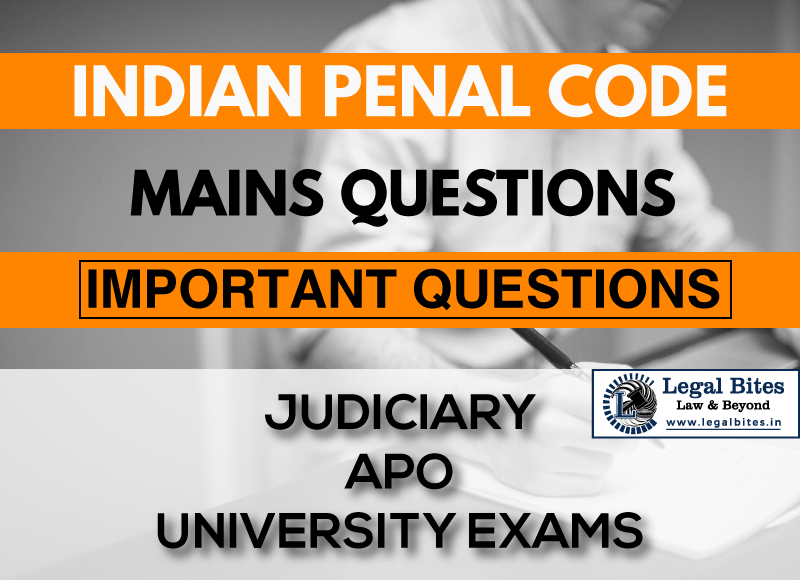A and B successively and independently wound C with murderous intent. C dies from the loss of blood caused by both the wounds together. But the fact remained that C would not have died from either wound alone. Discuss…
Find the answer to the mains question of IPC only on Legal Bites.

Question: A and B successively and independently wound C with murderous intent. C dies from the loss of blood caused by both the wounds together. But the fact remained that C would not have died from either wound alone. Discuss the criminal liability of A and B. [UPCJ, 1992, 1997] Find the answer to the mains question of IPC only on Legal Bites. [A and B successively and independently wound C with murderous intent. C dies from the loss of blood caused by both the wounds together. But the...
Question: A and B successively and independently wound C with murderous intent. C dies from the loss of blood caused by both the wounds together. But the fact remained that C would not have died from either wound alone. Discuss the criminal liability of A and B. [UPCJ, 1992, 1997]
Find the answer to the mains question of IPC only on Legal Bites. [A and B successively and independently wound C with murderous intent. C dies from the loss of blood caused by both the wounds together. But the fact remained that C would not have died from either wound alone. Discuss…]
Answer
Both A and B are liable to be held for the murder of C but separately and independently. This is because the present case at hand clearly suggests that both A and B wound C with murderous intent. Here both had similar intentions, i.e. to murder C but since they had acted successively and independently without pre-planning to act in concert for such omission.
They are to be tried separately for their offence under section 302 not read with section 34 of the IPC. A and B are said to have no doubt a similar intention but it was not a common intention that led to furtherance of the offence, hence section 34 is not to be invoked in the present case.
Common intention under Section 34, IPC does not mean the similar intention of several persons. To constitute common intention, the intention of each one of them must be known to the rest of them and shared by all. The common intention could be inferred from the facts and circumstances of the case, if it is not so the section cannot apply.
In the case of Mahboob Shah v. Emperor, [AIR 1945 PC 118], the court has given a close observation upon the distinction between the two. It says that Section 34 lays down a principle of joint liability in the doing of a criminal act. The section does not say the common intention of all, nor does it say an intention common to all.
The essence of the liability is to be found in the existence of a common intention animating the accused leading to the doing of a criminal act in furtherance of such intention.
To involve the aid of Section 34 successfully, it must be shown that the criminal act complained against was done by one of the accused persons in furtherance of the common intention of all; if this is so then liability for the crime may be imposed on any one of the persons in the same manner as if the act were done by him alone.
To procure the intention of individual care must be taken not to confuse same or similar intention with common intention; the parties which divide “their bounds” is often very thin; nevertheless, the distinction is real and substantial, and if overlooked will result in a miscarriage of justice.
Important Mains Questions Series for Judiciary, APO & University Exams
- IPC Mains Questions Series Part I: Important Questions
- IPC Mains Questions Series Part II: Important Questions
- IPC Mains Questions Series Part III: Important Questions
- IPC Mains Questions Series Part IV: Important Questions
- IPC Mains Questions Series Part V: Important Questions
- IPC Mains Questions Series Part VI: Important Questions
- IPC Mains Questions Series Part VII: Important Questions
- IPC Mains Questions Series Part VIII: Important Questions
- IPC Mains Questions Series Part IX: Important Questions
- IPC Mains Questions Series Part X: Important Questions
Admin Legal Bites
Legal Bites Study Materials correspond to what is taught in law schools and what is tested in competitive exams. It pledges to offer a competitive advantage, prepare for tests, and save a lot of money.

